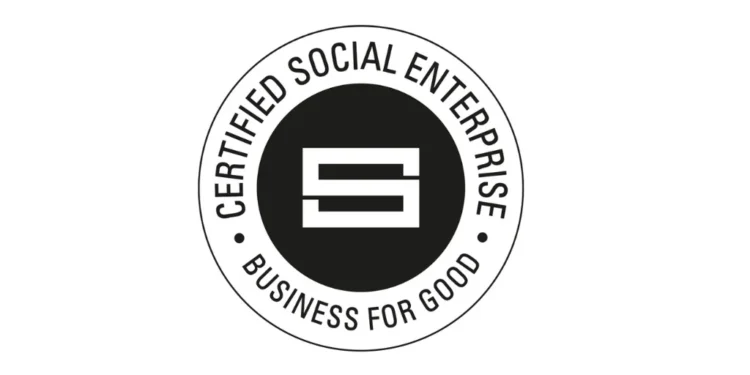What if your company could solve social problems and make money at the same time? Many believe it’s impossible, but organizations across the UK are proving otherwise.
This guide explores how mission-driven organizations create real change. We’ll show you practical strategies to boost your impact and build a sustainable model.
The sector has seen incredible growth, with start-ups expanding by 355%. This proves that purpose and profit can work together.
We’ll cover everything from understanding your mission to measuring performance. You’ll learn about legal structures, best practices, and support systems.
Tools like the NatWest SE100 Index help track excellence. Let’s begin your journey toward lasting success.
Key Takeaways
- Purpose-driven organizations combine social mission with business practices
- Measuring impact is crucial for sustainability and growth
- Proper legal structures support both mission and financial goals
- Best practices help organizations scale their positive effect
- Support systems and networks provide valuable resources
- Recent growth shows strong potential in this sector
- Benchmarking tools help track and improve performance
Understanding Social Enterprise UK and Its Mission
Many organizations across Britain are rewriting the rules of business. They prove that making money and making a difference can go hand in hand.
These groups form a vibrant sector with a powerful mission. They focus on solving problems while building sustainable operations.
What Defines a Social Enterprise in the UK?
These organizations prioritize their mission above all else. They focus on social or environmental goals rather than maximizing profits.
Most earnings get reinvested into their cause. They generate income through trade, not just donations.
This approach represents a way of doing business. It is not a specific legal structure itself.
Definitions may vary slightly between sources. The National Council for Voluntary Organizations outlines common traits.
Key characteristics include mission focus, profit reinvestment, and trade-based income. These elements create a sustainable model for change.
Examples show this diversity in action. Cockpit Arts operates as a charity supporting craft businesses.
City Health Care Partnership uses a Community Interest Company structure. Both demonstrate the model’s flexibility.
Legal forms can include charitable or non-charitable options. Companies limited by guarantee and cooperatives also fit this category.
Choosing the right structure matters greatly. It should align with your goals and operational needs.
Professional guidance helps make this important decision. Proper setup supports both mission and financial objectives.
The Growing Impact of Social Enterprises Nationwide
These mission-driven organizations create real change across communities. Their work addresses critical needs while building economic strength.
They contribute significantly to local and national economies. Job creation remains one of their most valuable contributions.
Many operate in deprived areas where support matters most. They bring opportunity and services to underserved populations.
Leadership within these organizations often reflects diverse backgrounds. This inclusivity strengthens their connection to communities.
Data from various sources shows their expanding scope. The sector demonstrates remarkable diversity in size and focus.
Each year brings new innovations and approaches. This continuous evolution drives greater impact across Britain.
Understanding these fundamentals proves essential for anyone involved. Whether starting or supporting, this knowledge builds stronger organizations.
The growth of these businesses signals a shift in how we approach challenges. They represent a powerful force for positive change.
Remarkable Growth and Performance Metrics
Recent data reveals unprecedented expansion among purpose-first organizations. These numbers demonstrate their increasing influence across various sectors.
Performance tracking shows consistent improvement in both financial and mission outcomes. This dual focus creates sustainable models for change.
Staggering 355% Growth Among Start-up Social Enterprises
New mission-driven businesses showed incredible momentum before global challenges emerged. The NatWest SE100 Index reported 355% revenue growth for newcomers.
This impressive expansion demonstrates the model’s potential from day one. Early-stage groups also achieved 243% profit growth year-over-year.
Their average earnings reached £7,300 despite being in initial phases. This proves financial viability can accompany social mission immediately.
Profitability and Financial Sustainability Trends
Established organizations show equally promising results. The top 100 enterprises achieved 39% revenue growth during the same period.
Their average profit reached £151,000, indicating strong sustainability. This performance appears across different sizes and stages of development.
Megan Peat of NatWest notes this consistency in their Health & Fitness report. The data comes from comprehensive pre-pandemic surveys.
Impact Measurement Becoming Standard Practice
Mission-driven groups increasingly prioritize tracking their effectiveness. Average impact scores reached 8.2 out of 12 for leading organizations.
Newcomers scored similarly at 8.1, showing early commitment to evaluation. Ben Carpenter, CEO of Social Value UK, emphasizes this shift.
He states impact management must be a priority from the start rather than an afterthought. This approach strengthens both mission and financial outcomes.
Eddie Finch of Buzzacott observed remarkable adaptability during difficult times. These businesses often provide crucial community support during crises.
The NatWest SE100 Awards recognize excellence through this dual lens. Honorees include groups like ACH, Belu, and The Women’s Organisation.
These metrics underscore how robust models and measurement systems drive success. Financial growth and impact assessment work together toward mission goals.
Legal Structures for UK Social Enterprises
Navigating legal options requires careful consideration of your mission, funding, and growth plans. The framework you select shapes operations, tax benefits, and impact measurement.
Various structures exist for mission-driven organizations. Each offers different advantages for specific goals and scales.
Community Interest Companies (CICs) Explained
Community Interest Companies serve as a popular choice for non-charitable ventures. They specifically benefit the community through their operations.
These entities feature asset locks and profit distribution limits. This ensures resources stay dedicated to the mission.
CICs must submit annual community interest reports. This transparency maintains accountability to stakeholders.
The CIC regulator provides guidance on establishing these structures. Webinars and resources support the decision-making process.
Charitable vs. Non-Charitable Social Enterprise Models
Charitable models include traditional charities and Charitable Incorporated Organisations. They offer significant tax advantages but face stricter regulation.
Registration with the Charity Commission remains mandatory for these entities. They must demonstrate public benefit in all activities.
Non-charitable options include companies limited by shares and CICs. These provide greater operational flexibility in many cases.
The choice affects fundraising ability and governance requirements. Each model suits different mission types and funding sources.
Some organizations blend characteristics from both categories. This creates hybrid models that maximize benefits.
Choosing the Right Structure for Your Mission
Additional frameworks include cooperatives and community benefit societies. These work well for member-owned ventures and local initiatives.
Sole trader partnerships offer simplicity for smaller operations. They involve personal liability but minimal bureaucracy.
Consider governance needs, liability protection, and reporting obligations. Professional consultation helps navigate these complex decisions.
The Interface Legal Advisory Service provides affordable guidance on structures. They specialize in mission-driven organization setup.
Selecting the proper foundation proves crucial for long-term sustainability. It supports both compliance and maximum social effect.
Examples demonstrate how structure aligns with operational needs. Cockpit Arts uses a charitable model supporting craft businesses.
City Health Care Partnership operates as a CIC structure. Both show how legal choices serve specific purposes.
Government resources through GOV.UK offer additional information. These help founders make informed structural decisions.
Best Practices for Social Enterprise Success
Implementing key operational approaches can dramatically enhance the effectiveness and longevity of values-based businesses. These methods help organizations balance their social mission with financial requirements.
Leading groups follow specific frameworks that support sustainable growth. They integrate impact measurement into daily operations rather than treating it as separate.
Implementing Effective Impact Measurement Systems
Strong evaluation tools provide crucial insights into performance. The SE100 survey assesses multiple dimensions including financial results and social effect.
Tracking metrics like turnover and profit demonstrates value to stakeholders. Impact scores help inform strategic decisions and show real progress.
Starting measurement early creates a culture of accountability. This approach makes evaluation part of the business DNA from day one.
Building Resilient Business Models for Long-term Sustainability
Successful organizations develop adaptable structures that withstand challenges. They diversify income streams to ensure financial stability.
Aligning operations with community needs maintains mission focus during expansion. Growth should support rather than dilute the core purpose.
Regular review of practices allows for adjustment based on feedback. This adaptability proves especially valuable during changing environments.
Storytelling and Communicating Your Social Value
Powerful narratives combine data with human experiences to engage audiences. Effective communication attracts customers, investors, and partners.
SE100 applications demonstrate how leading groups share their stories. They highlight both quantitative results and qualitative transformations.
Corporate collaborations and buying social initiatives amplify reach. These partnerships bring additional resources while expanding effect.
These interconnected practices—measurement, resilience, and storytelling—create thriving organizations. They form the foundation for competitive advantage in this sector.
Support Systems and Resources Available
Numerous support systems exist to help values-based businesses navigate challenges and maximize their community impact. These resources provide crucial guidance, recognition, and partnership opportunities.
Access to proper networks can accelerate growth and sustainability. Organizations benefit from shared knowledge and collaborative approaches.
NatWest SE100 Index and Recognition Programs
The NatWest SE100 Index serves as a premier recognition platform. It annually lists the top 100 performers and 25 newcomers.
This rigorous survey evaluates both financial performance and social effect. Participation offers significant visibility and networking benefits.
The NatWest SE100 Awards celebrate excellence and resilience. Winners gain access to valuable partnerships and media exposure.
NatWest Social & Community Capital provides additional support. This helps organizations scale their positive effect.
Professional Guidance and Legal Advisory Services
Interface Legal Advisory Service offers affordable legal advice. They specialize in structures like Community Interest Companies.
GOV.UK provides comprehensive guidance on setting up mission-driven ventures. This includes regulatory requirements and best practices.
Organizations like Social Enterprise UK offer valuable resources and guides. The National Council for Voluntary Organizations provides updates on evolving practices.
Professional consultation ensures proper structural decisions from the start. This foundation supports long-term sustainability.
Corporate Partnership Opportunities and Buying Social
PwC’s Social Entrepreneurs Club connects ventures with large businesses. This facilitates skills sharing and procurement opportunities.
The Buying Social initiative promotes corporate procurement from mission-driven suppliers. This creates sustainable revenue streams for growing organizations.
PwC’s collaboration with Mediorite demonstrates successful partnership models. They provide training programs and recognition awards.
These corporate relationships drive both growth and community effect. They represent powerful opportunities for scaling impact.
Media platforms like Pioneers Post raise awareness through quality content. Subscriptions support journalism focused on this sector.
Crisis support resources became particularly valuable during recent challenges. Organizations developed adaptive strategies for community response.
Leveraging these systems enhances funding access and operational advice. Active engagement helps navigate challenges and seize opportunities.
These resources collectively strengthen the ecosystem for purpose-driven business. They enable greater sustainability and expanded community benefit.
Conclusion: The Future of Social Enterprise in the UK
Innovative models are redefining success in the business world today. These organizations combine purpose with profit in remarkable ways.
They show incredible resilience during challenging times. Their focus remains on community impact and sustainable growth.
Future trends point toward greater emphasis on measurement and corporate partnership. Inclusive approaches will drive continued expansion.
Recognition programs like the NatWest SE100 foster excellence across the sector. Leveraging available resources and services ensures ongoing success.
This movement will keep growing in influence and scale. These businesses are building a more equitable economy for all.
FAQ
What exactly is a social enterprise?
A social enterprise is a business that trades to tackle social problems, improve communities, or benefit the environment. Profits are principally reinvested to further their mission rather than being distributed to shareholders.
How fast is the social enterprise sector growing?
The sector is experiencing rapid expansion. Data shows a remarkable 355% growth rate among new start-ups, demonstrating a powerful shift towards mission-driven business models.
What is a Community Interest Company (CIC)?
A CIC is a special type of limited company designed for businesses that want to use their profits and assets for the public good. It has an asset lock to ensure its resources are dedicated to its community purpose.
How do social enterprises measure their success?
Beyond financial health, these organizations use impact measurement systems to track their social and environmental outcomes. This practice is becoming standard to prove their value to communities and investors.
Where can I find support for starting a social enterprise?
Numerous resources exist, including the NatWest SE100 Index for recognition, specialized legal advisory services, and networks that facilitate corporate partnership opportunities through initiatives like Buying Social.
Can a social enterprise be a charity?
Some social enterprises are structured as charities, but many operate under different legal forms, like a CIC. The key difference often lies in the primary focus on trading for a social purpose versus grant-dependent charitable activities.





